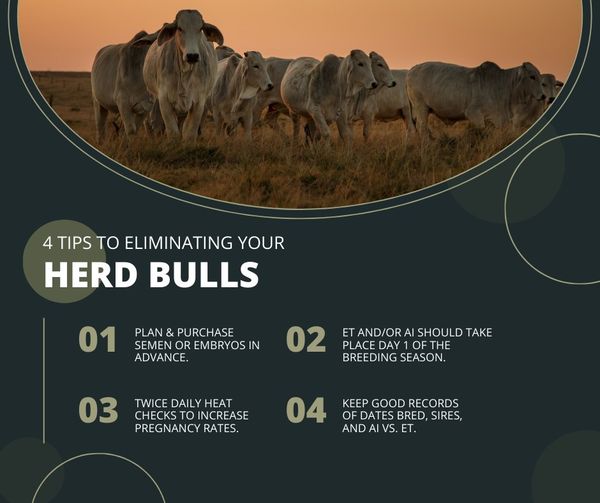
Managing a Thriving Cow-Calf Operation Without a Herd Bull
Post Date: October 3, 2023


In the dynamic world of cattle ranching, the integration of cutting-edge techniques like Artificial Insemination (AI) and Embryo Transfer (ET) has ushered in a new era of managing a prosperous cow-calf operation. I this post, we're shedding light on how this approach can not only work but thrive within your operation:
- Genetic Selection: One of the prime advantages of not using a traditional herd bull is the freedom to diversify your genetic pool. With AI and ET, you can strategically choose matings and invest in high-quality embryos or semen straws. The goal? To produce genetically superior and high-performing offspring, even if it means paying a bit more for top-notch genetics.
- Timing Considerations:While the dairy industry often practices year-round breeding, a set breeding season may be your preference. Managing AI and ET within a defined breeding season demands more intensive oversight. Procedures must be timed meticulously, and cows closely monitored for heat. Accessibility to a trained technician within a 12-hour window becomes crucial.
- Monitoring and Record-Keeping: The backbone of successful management, whether or not a herd bull is involved, lies in meticulous record-keeping. Document breeding dates, AI and ET procedures, and crucial data about donor and recipient cows. These records are your roadmap to effective herd management.
- Realistic Expectations: Despite your best efforts, not every cow will conceive on the first AI or ET attempt. Maintaining a more intensive management style, such as twice-daily heat watches for AI, can maximize pregnancy rates. For cows that don't conceive within the defined breeding season, it's essential to have a plan in place for their future role within the operation.
By merging AI and ET with expert guidance and a well-thought-out strategy, managing a cow-calf operation without a traditional herd bull can yield outstanding results. It's a path that offers meticulous genetic control, the potential for rapid herd improvement, and the possibility of a highly productive and profitable cattle operation.

|
|
|